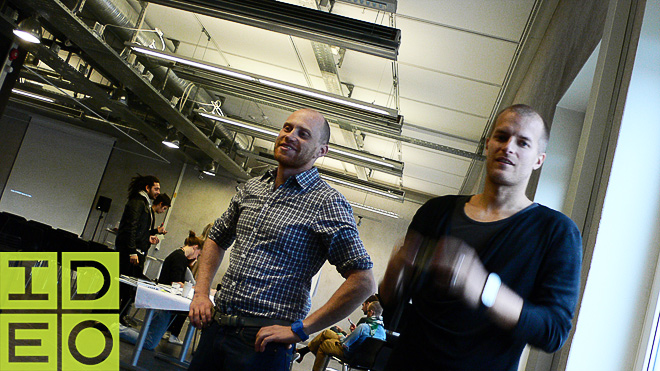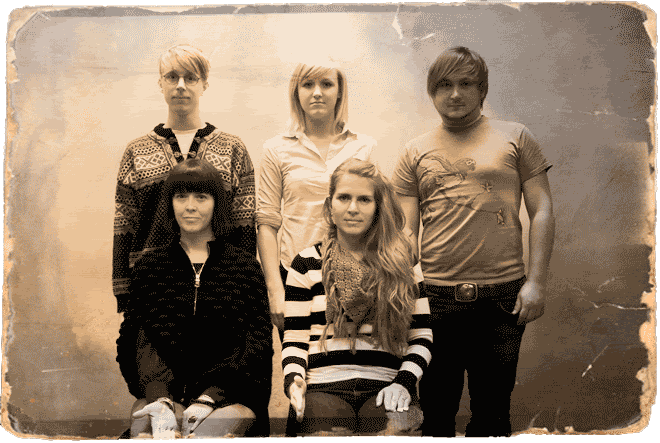
One of the highlights of the course so far was a three day hands on workshop with
IDEO. We had Fredrik Aidehag & Juho Parviainen from the Munich and London office of IDEO over at Hyper Island to give us a lecture and conduct a workshop on human centered design - just the way
IDEO work themselves.
We worked in new groups for this assignment and each group identified a local business in Stockholm and approached them with this project. My group consisting of Linn, Ahmed, Mary, Joacim & Paula worked with a high-end hair salon in central Stockholm. The process that followed was divided into four main areas: Insight, Synthesis, Idea development and Prototyping.
Insight was about observing and understanding the scenario. We spend a day at the hair salon talking to employees, interviewed customers, documented the user experience and looked into all touch points of the business. We also talked to 'extremes' - people who would never use this kind of service and people who have very high demands on such a service. All this was documented in word, picture and video.
After the insight phase we started the synthesis phase: We gathered and structured different user stories, using the data from interviews. This phase was about framing opportunities from the researched material. We clustered observations and connected them with each other in order to extract behavioral insights. Having identified areas of opportunity we formulated several '
How might we...' questions - question that we would use in the next step, the brainstorming to develop ideas around them. Examples: How might we get people to be braver about new hairstyles? How might we lessen the feeling of risk of a bad haircut? How might we help people communicate what they want in a clearer way?
Brainstorming: to be honest, I've been in a few brainstorming session but never in a very
effective one - I was never a fan of this type of idea development process. But IDEO showed us ways to facilitate effective sessions to harness the creativity of a larger group, and it worked a treat. Here are the 7 rules of brainstorming as used by IDEO:
rule #1
defer judgementthere are no bad ideas at this point because there's plenty of time to judge afterrule #2
encourage wild ideasit's the wild ideas that often provide the breakthroughs and we can always bring ideas down to earth later, we new paths for non obvious ideasrule #3
build on the ideas of othersthink 'and' rather than 'but'rule #4
stay focused on topicyou get better output if everyone is disciplinedrule #5
one conversation at a timethat way all ideas can be heard and built uponrule #6
be visual
sometimes a picture really can speak a thousand wordsrule #7
go for quantity, not qualityset an outrageous goal and surpass it!Besides those rules, which are both obvious and crucial, there are other key points to turn the brainstorming session into an effective one. The group size should be quite big, 7-10 people is a good number, to keep the tempo of the session high. There should be a time limit, the session should be scheduled for a short time, but this time should be used effectively. But most of all, the work and research done beforehand helps the greatest deal: having the right focus or 'How might we...' questions to steer the group seemed to be the most helpful thing.
Using all those tools we generated an enormous amount of ideas in a short time around our chosen opportunity areas and after evaluating them in our team we settled for one specific direction: The hair salon we were working with has a rather creative approach, they want their customers to take more risks with their hair and be more adventurous. For this we focused on a voice controlled digital mirror that helped the customer and the person cutting the hair to explore more and daring possibilities.
Entering the fourth, last and most fun phase of human centered design: Prototyping or build to think. The solution we came up with had to be prototyped within 2 hours so we could share it with the course for feedback and further improvement. We had to take decisions on how things work down to the details, and act out the scenarios that could occur. The point here was to make the idea as real as possible as fast as possible. We had a great time building a corner of the hair salon and faking a digital & voice controlled display, emulating the experience.
Embarking on this new way of working was exciting and taught me the effective way of human centered design which opened up many creative opportunities within this project. I would have loved to work another week with the brilliant guys from IDEO. Going through the whole process with a specific client helped understanding this way to work and I cannot wait for the next project where I can put those methods to use. IDEO seems like an awesome place to work.
My three biggest learnings from this workshop:
- How to use behavioral research to gain insights and frame opportunity areas
- How to prepare and facilitate an effective brainstorming session in a big group
- How to bring an idea to life quick and dirty in order to see and improve its potential












